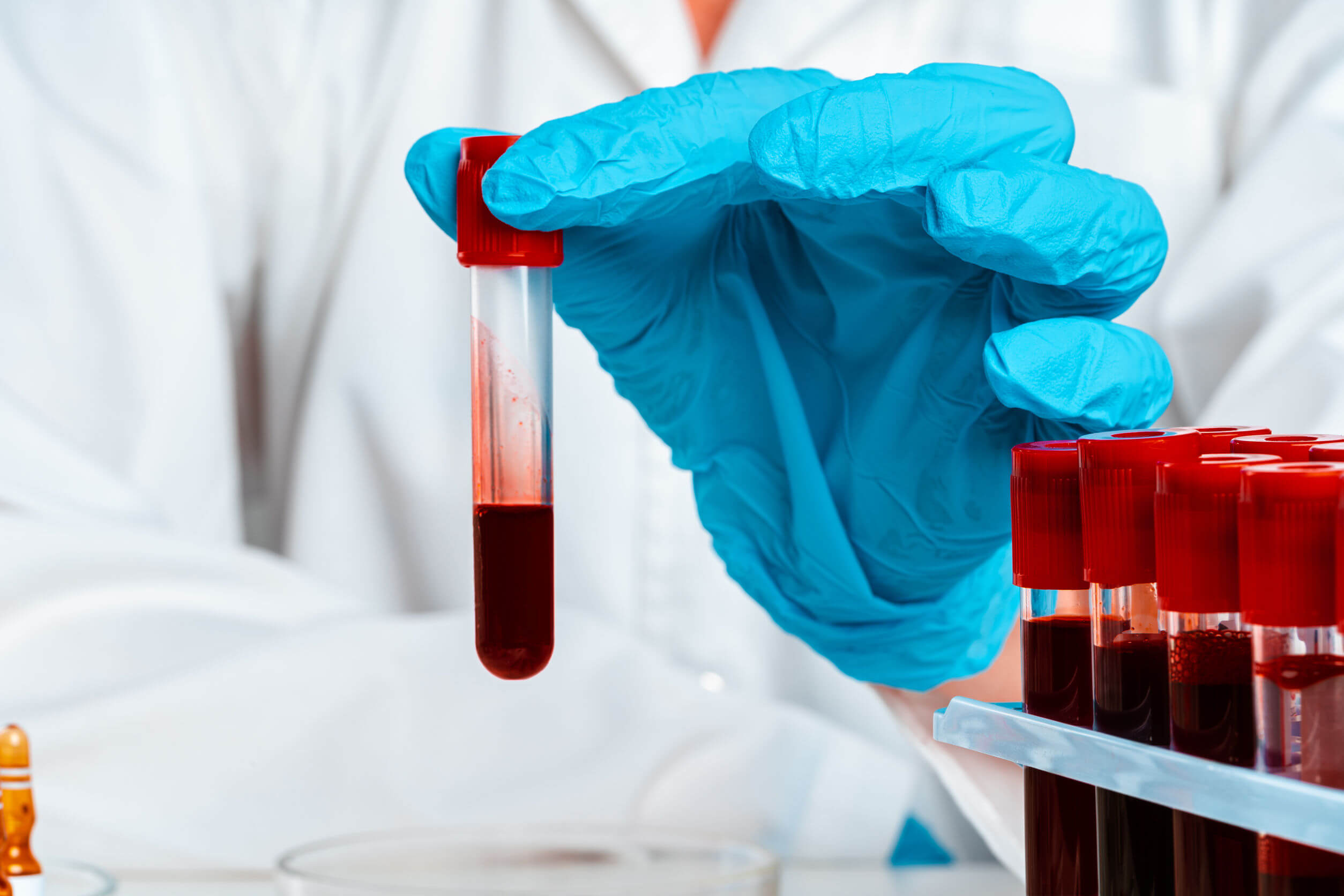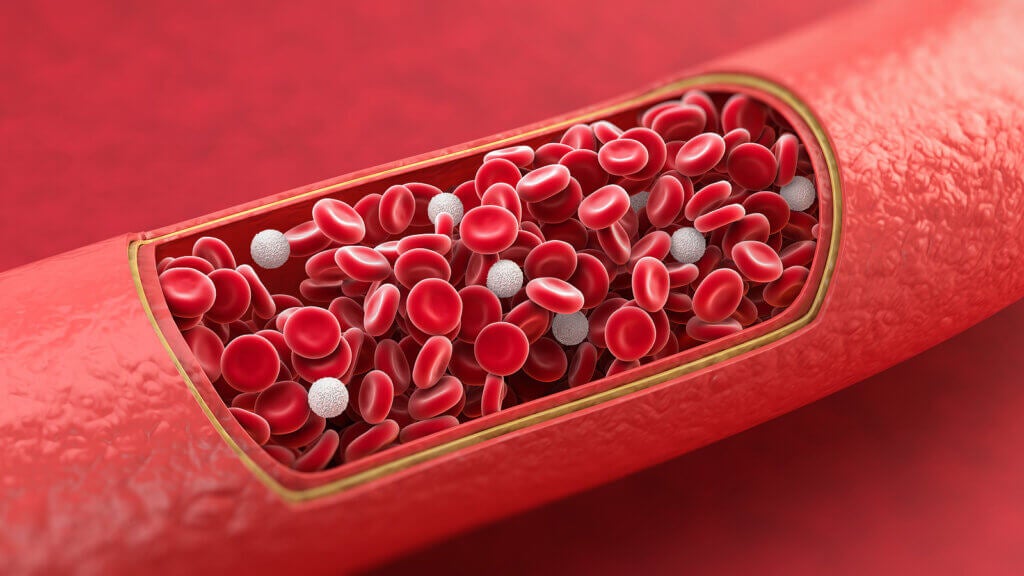The 8 Most Common Diseases in Men and Their Treatment


Escrito y verificado por el biólogo Samuel Antonio Sánchez Amador
According to the Global Burden of Disease Study (GBD), 95% of the world’s population has some type of disease. Almost all human beings are “sick” with something, be it the flu or a chronic but mild condition like atopic dermatitis. Because of this, it’s impossible to conceive life without health disorders.
In any case, it’s striking to see that there are many illnesses and diseases whose prevalence varies between men and women. As indicated by the World Health Organization (WHO), of the 40 leading causes of death in the world, 33 favor the male gender. Here we show you the 8 most common diseases in men.
What are the most common diseases in men?
According to the aforementioned study, certain hormones and metabolic processes predispose men to die earlier than women. The fact that members of the male gender develop certain diseases more easily is also due to a large number of social factors.
For example, as the Statista portal indicates, men are much more prone to heavy alcohol consumption than women. The same goes for obesity, smoking, drug use, violence, suicide, and many more habits and emotional disorders.
From a historical point of view, the male gender has taken less care and taken more risks. The canons of beauty were automatically associated with women and, because of this, they have tended to reduce their consumption of harmful substances and harmful foods. This topic is of great interest at a social level, but it is not our concern at this time.
Due to all these reasons and many more, life expectancy in men is lower. Next up, we’re going to show you the 8 most common diseases in men, some of which are mild, and others that can even bring about the early death of the patient. Keep reading!
1. Androgenic alopecia

Androgenic alopecia is a medical term that refers to common baldness, the most typical type of hair loss in the male gender. As indicated by the Mexican Journal of Dermatology, up to 45% of men (and 10% of women) will end up developing this condition throughout their lives.
This pathology is more linked to men, since androgens (male sex hormones, such as testosterone) act directly on some regions of the scalp, which are predisposed to be modified. The hair follicle atrophies until it closes, which then prevents the hair from growing.
2. Myocardial infarction
Myocardial infarction is a type of ischemic heart disease, which means that it’s a disease caused by the obstruction and deterioration of the arteries of the heart. It occurs due to the accumulation of fats, cholesterol, and inflammatory cells in the arterial walls, which form a clot and prevent proper blood flow.
According to the World Health Organization (WHO), myocardial infarction and other heart diseases are the leading cause of death for both men and women in high-income countries. While women are more likely to suffer heart attacks after 55 years, men are more prone to it after 45.
Obesity, high cholesterol, tobacco use, diabetes, illegal drug use, and a lack of physical activity greatly increase the chances of a heart attack. If you lead a correct lifestyle, the risk is drastically reduced.
3. Lung cancer
Of the approximately 1 billion people who smoke in the world, only 200 million are women. Without going any further, around 40% of men worldwide are tobacco smokers, while the percentage in women is 9%. It’s not surprising, then, that lung cancer appears more in men.
Smoking tobacco is the determinant in 9 out of 10 cases of lung cancer in the male gender. As indicated by sources already cited, up to 1 in 2 people addicted to nicotine end up dying from this harmful habit, so the advice in this matter is more than clear. The consumption of tobacco is not justified under any circumstances.
We’re going to mention a little more about the symptoms of lung cancer, as it’s such a serious disease with a high fatality rate. According to the Centers for Disease Control and Prevention (CDC), some of the clinical signs of this disease are as follows:
- A persistent cough that stays constant or worsens over time
- Chest pain and shortness of breath
- Wheezing
- Coughing up blood
- Constant tired feeling
- Weight loss with no apparent cause
These are some of the symptoms of lung cancer, but they can also appear due to other pathologies. If you feel that something isn’t going well at a respiratory level, and you have a history of smoking, then don’t delay going to see your doctor: prevention is always better than cure.
4. Prostate cancer: one of the most common cancerous diseases in men
Unfortunately, we still have to continue looking at the field of malignant tumors. Prostate cancer is more prevalent in men because, quite simply, women don’t have a prostate, and so they can’t develop tumors in this organ. In countries such as Spain, there is an estimated incidence of 139 cases per 100,000 men per year in this disease.
Due to the male physiology, this type of neoplasm is one of the most common cancerous diseases in men. In fact, it ranks first in terms of cancer in men in many regions of the world, although it’s less lethal than lung cancer.
We’re now going to take a few moments to discuss the symptoms of prostate cancer. Like other types of neoplasia, rapid detection is the key to survival, so see a doctor without delay if you see any of these signs:
- Decreased strength in urine flow
- Blood in urine or semen
- Reduction in urine output (oliguria)
- Bone pain and weight loss for no apparent reason
- Erectile dysfunction
As in the previous case, surgery, chemotherapy, radiation therapy, and targeted therapies are usually the way to go, depending on the status of the tumor and the patient’s general health. The prognosis depends entirely on the extent of the tumor and whether or not metastasis has occurred.
5. High blood pressure
Studies show that hypertension is more prevalent in men than in women, except after menopause. More than 1 billion people around the world suffer from high blood pressure, and, in many cases, this condition develops without an apparent cause.
Although the etiology isn’t always exact, there are a number of risks that predispose the patient to developing hypertension. Among them, we find obesity, family history, high consumption of salty food, alcoholism, smoking, lack of exercise, and stress.
Almost 50% of people over 65 have hypertension, so we’re talking about one of the most common diseases not only in men, but in all of society. To combat it, it’s essential to change the patient’s lifestyle (sometimes drastically), but certain medications may also be necessary.
6. Gout
Gout is a chronic disease caused by the accumulation of monosodium urate crystals (derived from uric acid) in different parts of the body, especially the joints. It’s more common in men, since men have higher levels of circulating uric acid in general.
In addition to being more prevalent in men, gout tends to appear earlier in them. This usually occurs between 30 and 50 years of age in males, while women increase the probability of developing it after menopause.
As indicated by the Mayo Clinic, non-steroidal anti-inflammatory drugs (NSAIDs), colchicine and corticosteroids are usually the drugs that are prescribed in this clinical picture. It’s also necessary for the patient to make certain changes in their lifestyle, such as increasing their water consumption, exercising regularly, and reducing foods rich in purines.
7. Testicular cancer: one of the most common diseases in young men
This is the most common type of cancer in male patients between the ages of 15 and 45. The truth is that the prognosis and expectations are very different from the cancers mentioned above, since the 5-year survival rate after diagnosis exceeds 95%. Some of the characteristic symptoms of this malignancy are the following:
- Lump or enlargement in either of the 2 testicles
- A feeling of heaviness in the scrotum
- Dull abdominal or groin pain
- Accumulation of fluid in the scrotum
- Enlargement in the breast/chest area
- Back pain
Many testicular cancers are resolved by removing the affected testicle surgically.
Sometimes nearby lymph nodes may also need to be removed, as cancer cells are likely to have spread to them. Depending on the extent of the tumor, chemo or radiation therapy may also be necessary.
8. Hemophilia

As indicated by the United States National Library of Medicine, hemophilia is a rare condition that usually occurs in men. This is due to an alteration in the genes that encode coagulation factors VIII or IX, whose location is established on the X chromosome (female sex determinant).
A man who has a defective hemophilic gene will will always develop hemophilia, as the genome of males is XY. On the other hand, a woman must have defient copies of the genes in both chromosomes (they are XX), so the chances of developing the disease decrease. Therefore, its prevalence is much higher in men.
The main signs of hemophilia are excessive bleeding and sudden bruising. The main treatment for this pathology is the injection of the missing clotting factors into the patient’s bloodstream, and so the approach is a relatively easy one considering the complexity of the pathology.
The most common diseases in men
So, today we have shown you some of the most common diseases in men, but these aren’t the only ones. Many of them are caused by the physiology, anatomy, and genetic inheritance patterns of men, but others find their cause directly in an inappropriate lifestyle.
Obesity, alcoholism and smoking, among many other factors, decrease life expectancy. For this reason, a large part of the diseases mentioned here can be fought with a balanced diet, avoiding drugs, and exercising regularly. As they say, investing in health today is always an investment in the future.
According to the Global Burden of Disease Study (GBD), 95% of the world’s population has some type of disease. Almost all human beings are “sick” with something, be it the flu or a chronic but mild condition like atopic dermatitis. Because of this, it’s impossible to conceive life without health disorders.
In any case, it’s striking to see that there are many illnesses and diseases whose prevalence varies between men and women. As indicated by the World Health Organization (WHO), of the 40 leading causes of death in the world, 33 favor the male gender. Here we show you the 8 most common diseases in men.
What are the most common diseases in men?
According to the aforementioned study, certain hormones and metabolic processes predispose men to die earlier than women. The fact that members of the male gender develop certain diseases more easily is also due to a large number of social factors.
For example, as the Statista portal indicates, men are much more prone to heavy alcohol consumption than women. The same goes for obesity, smoking, drug use, violence, suicide, and many more habits and emotional disorders.
From a historical point of view, the male gender has taken less care and taken more risks. The canons of beauty were automatically associated with women and, because of this, they have tended to reduce their consumption of harmful substances and harmful foods. This topic is of great interest at a social level, but it is not our concern at this time.
Due to all these reasons and many more, life expectancy in men is lower. Next up, we’re going to show you the 8 most common diseases in men, some of which are mild, and others that can even bring about the early death of the patient. Keep reading!
1. Androgenic alopecia

Androgenic alopecia is a medical term that refers to common baldness, the most typical type of hair loss in the male gender. As indicated by the Mexican Journal of Dermatology, up to 45% of men (and 10% of women) will end up developing this condition throughout their lives.
This pathology is more linked to men, since androgens (male sex hormones, such as testosterone) act directly on some regions of the scalp, which are predisposed to be modified. The hair follicle atrophies until it closes, which then prevents the hair from growing.
2. Myocardial infarction
Myocardial infarction is a type of ischemic heart disease, which means that it’s a disease caused by the obstruction and deterioration of the arteries of the heart. It occurs due to the accumulation of fats, cholesterol, and inflammatory cells in the arterial walls, which form a clot and prevent proper blood flow.
According to the World Health Organization (WHO), myocardial infarction and other heart diseases are the leading cause of death for both men and women in high-income countries. While women are more likely to suffer heart attacks after 55 years, men are more prone to it after 45.
Obesity, high cholesterol, tobacco use, diabetes, illegal drug use, and a lack of physical activity greatly increase the chances of a heart attack. If you lead a correct lifestyle, the risk is drastically reduced.
3. Lung cancer
Of the approximately 1 billion people who smoke in the world, only 200 million are women. Without going any further, around 40% of men worldwide are tobacco smokers, while the percentage in women is 9%. It’s not surprising, then, that lung cancer appears more in men.
Smoking tobacco is the determinant in 9 out of 10 cases of lung cancer in the male gender. As indicated by sources already cited, up to 1 in 2 people addicted to nicotine end up dying from this harmful habit, so the advice in this matter is more than clear. The consumption of tobacco is not justified under any circumstances.
We’re going to mention a little more about the symptoms of lung cancer, as it’s such a serious disease with a high fatality rate. According to the Centers for Disease Control and Prevention (CDC), some of the clinical signs of this disease are as follows:
- A persistent cough that stays constant or worsens over time
- Chest pain and shortness of breath
- Wheezing
- Coughing up blood
- Constant tired feeling
- Weight loss with no apparent cause
These are some of the symptoms of lung cancer, but they can also appear due to other pathologies. If you feel that something isn’t going well at a respiratory level, and you have a history of smoking, then don’t delay going to see your doctor: prevention is always better than cure.
4. Prostate cancer: one of the most common cancerous diseases in men
Unfortunately, we still have to continue looking at the field of malignant tumors. Prostate cancer is more prevalent in men because, quite simply, women don’t have a prostate, and so they can’t develop tumors in this organ. In countries such as Spain, there is an estimated incidence of 139 cases per 100,000 men per year in this disease.
Due to the male physiology, this type of neoplasm is one of the most common cancerous diseases in men. In fact, it ranks first in terms of cancer in men in many regions of the world, although it’s less lethal than lung cancer.
We’re now going to take a few moments to discuss the symptoms of prostate cancer. Like other types of neoplasia, rapid detection is the key to survival, so see a doctor without delay if you see any of these signs:
- Decreased strength in urine flow
- Blood in urine or semen
- Reduction in urine output (oliguria)
- Bone pain and weight loss for no apparent reason
- Erectile dysfunction
As in the previous case, surgery, chemotherapy, radiation therapy, and targeted therapies are usually the way to go, depending on the status of the tumor and the patient’s general health. The prognosis depends entirely on the extent of the tumor and whether or not metastasis has occurred.
5. High blood pressure
Studies show that hypertension is more prevalent in men than in women, except after menopause. More than 1 billion people around the world suffer from high blood pressure, and, in many cases, this condition develops without an apparent cause.
Although the etiology isn’t always exact, there are a number of risks that predispose the patient to developing hypertension. Among them, we find obesity, family history, high consumption of salty food, alcoholism, smoking, lack of exercise, and stress.
Almost 50% of people over 65 have hypertension, so we’re talking about one of the most common diseases not only in men, but in all of society. To combat it, it’s essential to change the patient’s lifestyle (sometimes drastically), but certain medications may also be necessary.
6. Gout
Gout is a chronic disease caused by the accumulation of monosodium urate crystals (derived from uric acid) in different parts of the body, especially the joints. It’s more common in men, since men have higher levels of circulating uric acid in general.
In addition to being more prevalent in men, gout tends to appear earlier in them. This usually occurs between 30 and 50 years of age in males, while women increase the probability of developing it after menopause.
As indicated by the Mayo Clinic, non-steroidal anti-inflammatory drugs (NSAIDs), colchicine and corticosteroids are usually the drugs that are prescribed in this clinical picture. It’s also necessary for the patient to make certain changes in their lifestyle, such as increasing their water consumption, exercising regularly, and reducing foods rich in purines.
7. Testicular cancer: one of the most common diseases in young men
This is the most common type of cancer in male patients between the ages of 15 and 45. The truth is that the prognosis and expectations are very different from the cancers mentioned above, since the 5-year survival rate after diagnosis exceeds 95%. Some of the characteristic symptoms of this malignancy are the following:
- Lump or enlargement in either of the 2 testicles
- A feeling of heaviness in the scrotum
- Dull abdominal or groin pain
- Accumulation of fluid in the scrotum
- Enlargement in the breast/chest area
- Back pain
Many testicular cancers are resolved by removing the affected testicle surgically.
Sometimes nearby lymph nodes may also need to be removed, as cancer cells are likely to have spread to them. Depending on the extent of the tumor, chemo or radiation therapy may also be necessary.
8. Hemophilia

As indicated by the United States National Library of Medicine, hemophilia is a rare condition that usually occurs in men. This is due to an alteration in the genes that encode coagulation factors VIII or IX, whose location is established on the X chromosome (female sex determinant).
A man who has a defective hemophilic gene will will always develop hemophilia, as the genome of males is XY. On the other hand, a woman must have defient copies of the genes in both chromosomes (they are XX), so the chances of developing the disease decrease. Therefore, its prevalence is much higher in men.
The main signs of hemophilia are excessive bleeding and sudden bruising. The main treatment for this pathology is the injection of the missing clotting factors into the patient’s bloodstream, and so the approach is a relatively easy one considering the complexity of the pathology.
The most common diseases in men
So, today we have shown you some of the most common diseases in men, but these aren’t the only ones. Many of them are caused by the physiology, anatomy, and genetic inheritance patterns of men, but others find their cause directly in an inappropriate lifestyle.
Obesity, alcoholism and smoking, among many other factors, decrease life expectancy. For this reason, a large part of the diseases mentioned here can be fought with a balanced diet, avoiding drugs, and exercising regularly. As they say, investing in health today is always an investment in the future.
- Global Burden of Disease (GBD). Recogido a 25 de febrero en http://www.healthdata.org/gbd/2019
- Resumen de Estadísticas Mundiales de la Salud (OMS), El País. Recogido a 25 de febrero en https://elpais.com/elpais/2019/04/03/planeta_futuro/1554313576_035882.html
- Porcentaje de población que consumió alcohol de forma intensiva en España en 2017, por género y frecuencia, Statista. Recogido a 25 de febrero en https://es.statista.com/estadisticas/536553/frecuencia-de-consumo-intensivo-de-alcohol-por-genero-en-espana/
- Alopecia androgénica, Revista Mexicana de Dermatología. Recogido a 25 de febrero en https://www.medigraphic.com/pdfs/derrevmex/rmd-2015/rmd155f.pdf
- Principales causas de defunción en el mundo, OMS. Recogido a 25 de febrero en https://www.who.int/es/news-room/fact-sheets/detail/the-top-10-causes-of-death
- ¿Cuáles son los síntomas del cáncer de pulmón? CDC. Recogido a 25 de febrero en https://www.cdc.gov/spanish/cancer/lung/basic_info/symptoms.htm
- La hipertensión es más prevalente en hombres que en mujeres, salvo a partir de la menopausia, Quirón Salud. Recogido a 25 de febrero en https://www.quironsalud.es/es/comunicacion/notas-prensa/hipertension-prevalente-hombres-mujeres-salvo-partir-menopa
- Gota, Mayo Clinic. Recogido a 25 de febrero en https://www.mayoclinic.org/es-es/diseases-conditions/gout/diagnosis-treatment/drc-20372903
- Hemofilia, medlineplus.gov.
Este texto se ofrece únicamente con propósitos informativos y no reemplaza la consulta con un profesional. Ante dudas, consulta a tu especialista.







